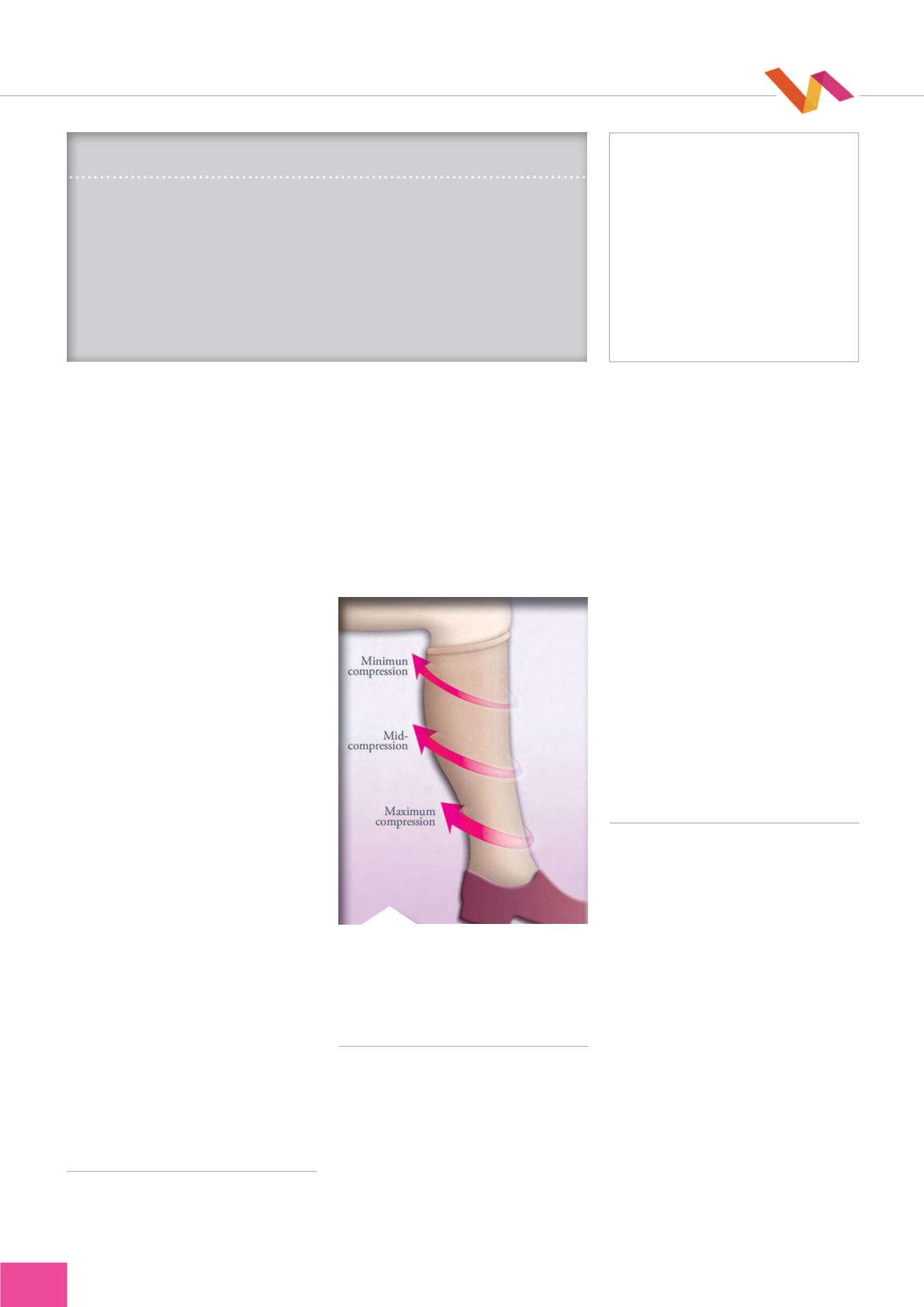
30
WOUND CARE TODAY
2014,Vol 1, No 1
FOCUS ON COMPRESSION THERAPY
›
C
ompression therapy is
recognised as an essential
component for the healing
of venous leg ulcers, and the
maintenance of healing once it has
been achieved. Traditionally, four-
layer bandage systems were the
only option for the application of
appropriate levels of compression.
However, over the past decade, two-
layer compression bandage systems
and compression hosiery kits have
been introduced, providing clinicians
and patients with a variety of options
to achieve the required levels of
compression. This article will explain
why compression therapy is vital in
healing and maintaining healing in
venous leg ulcers and preventing
the deterioration of skin changes
associated with venous disease. It
will also discuss the options available
to clinicians when trying to achieve
optimum compression levels.
Understanding and applying
compression therapy
THEORY OF COMPRESSION
It is widely accepted that
compression therapy increases
healing rates for venous ulceration
(Cullum et al, 2001; Ashby et al,
2013). Compression therapy aims
to reverse venous hypertension
and works on a number of levels
to achieve this. In simple terms,
the application of direct graduated
pressure on the patient’s lower limb
Leanne Atkin, lecturer practitioner/vascular nurse
specialist, School of Human and Health Sciences,
University of Huddersfield and Mid-Yorkshire
NHS Trust; Kate Shirlow, vascular specialist sister,
Mid-Yorkshire NHS Trust
IN BRIEF
By far the majority of leg ulcers seen in clinical practice are caused
by underlying venous disease.
Compression therapy aims to reverse venous hypertension,
undoing the conditions that cause oedema and venous ulceration.
Different types of compression are available and their use depends
on the amount of pressure required.
Compression techniques include various types and strengths of
bandaging, as well hosiery.
KEYWORDS:
Compression
Venous leg ulcers
Oedema
Bandaging
Hosiery
Leanne Atkin, Kate Shirlow
Figure 1.
Compression systems
provide graduated compression to
the lower limb to improve venous
return and reduce oedema.
increases tissue pressure, supports
the superficial veins, encourages
venous return, reduces the calibre
of the veins, and aids calf muscle
pump activity (
Figure 1
). Through
these actions, compression therapy
helps to improve venous return and
reduce lower limb oedema, as fluid
is directed from the tissues back into
the venous and lymphatic system.
COMPRESSION OPTIONS
Compression systems are all
designed to provide graduated
compression
to the lower limb and
thereby improve venous return
and reduce oedema if present.
Graduated compression means
that the highest pressure is applied
to the ankle, decreasing as it
rises up the patient’s lower limb.
Compression systems that deliver
40mmHg pressure at the ankle have
been shown to be the most effective
in treating venous leg ulceration
(O’Meara et al, 2012).
Compression bandaging
The four-layer system of compression
bandaging was considered the‘gold
standard’treatment for venous disease
and remains a valuable tool in the
management of leg ulceration. The
technique involves the application of


